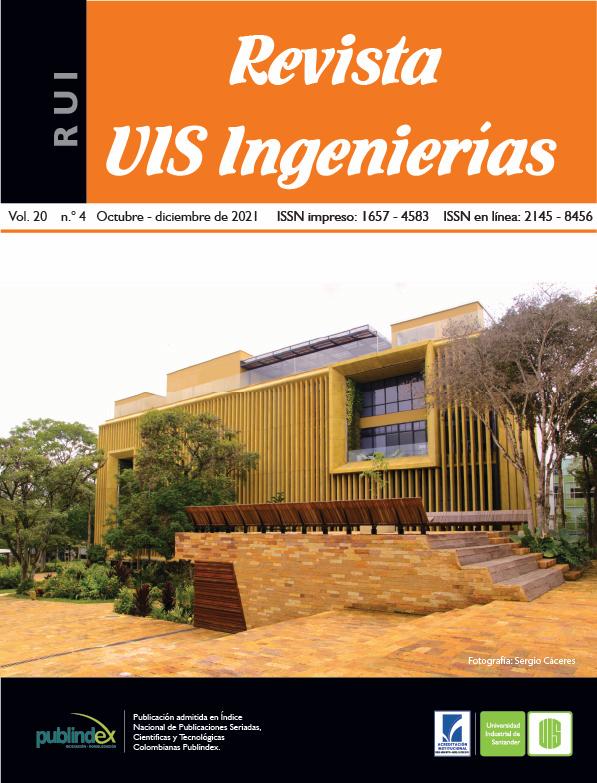Published 2021-08-03
Keywords
- blast furnace dust,
- granular base,
- granular sub-base,
- resistance,
- plasticity
- expansion,
- water stability ...More
How to Cite
Abstract
The granular base and sub-base materials used in the construction of road surface structures must comply with certain requirements. In some cases, the requirements are not complied with and it is necessary to search for alternatives to improve the properties of the materials and thereby enable the use of these materials in the construction of roadways. Blast furnace dust is a residue from the production of steel that is of little use and is causing a negative environmental impact due to its accumulation. This study was carried out to analyse the possibility of utilizing blast furnace dust to improve the properties of granular materials, as an alternative that mitigates the environmental problems caused by the disposal and accumulation of these residues, which affect the areas of influence of these companies. To achieve this goal, the chemical and physical properties of blast furnace dust were determined and a analysis was carried out on mixtures of granular base and sub-base materials with 0, 2, 4, 6, and 8 percent dust. The analysis took place of determined characteristics including optimum humidity, maximum dry density, resistance, plasticity, and expansion in the presence of water. The results indicate that with the incorporation of 6% of BFD the properties of the granular material are improved and it can be used as an optimal material in road construction.
Downloads
References
[2] A. Linares-Unamunzaga, H. Gonzalo-Orden, J. D. Minguela, H. Pérez-Acebo, “New procedure for compacting prismatic specimens of cement-treated base materials,” Appl. Sci., vol. 8, no. 6, pp. 970, 2018, doi: 10.3390/app8060970.
[3] M. D. Jérémie, D. Jacques, “The Geotechnical Parameters of a Soil-Bitumen,” Ejge, vol. 24, pp. 907-918, 2019.
[4] S. H. Chen, D. F. Lin, H. L. Luo, and Z. Y. Lin, “Application of reclaimed basic oxygen furnace slag asphalt pavement in road base aggregate,” Constr. Build. Mater., vol. 157, pp. 647-653, 2017, doi: 10.1016/j.conbuildmat.2017.09.136.
[5] F. I. Shalabi, I. M. Asi, H. Y. Qasrawi, “Effect of by-product steel slag on the engineering properties of clay soils,” J. King Saud Univ. - Eng. Sci., vol. 29, no. 4, pp. 394-399, 2017, doi: 10.1016/j.jksues.2016.07.004.
[6] V. Sahu, A. Srivastava, A. K. Misra, A. K. Sharma, “Stabilization of fly ash and lime sludge composites: Assessment of its performance as base course material,” Arch. Civ. Mech. Eng., vol. 17, no. 3, pp. 475-485, 2017, doi: 10.1016/j.acme.2016.12.010.
[7] W. tao Hu et al., “Difference of zinc volatility in diverse carrier minerals: The critical limit of blast furnace dust recycle,” Miner. Eng., vol. 116, pp. 24-31, 2018, doi: 10.1016/j.mineng.2017.11.001.
[8] M. Omran, T. Fabritius, “Effect of steelmaking dust characteristics on suiTable recycling process determining: Ferrochrome converter (CRC) and electric arc furnace (EAF) dusts,” Powder Technol., vol. 308, pp. 47-60, 2017, doi: 10.1016/j.powtec.2016.11.049.
[9] D. A. Iluţiu-Varvara, C. M. Mârza, F. V. Domniţa, I. M. S. Boca, M. Tintelecan, “An Assessment of the Metallic Iron Content from Metallurgical Wastes - Essential Factor for Sustainable Development in the Steelmaking Industry,” Procedia Eng., vol. 181, pp. 357-362, 2017, doi: 10.1016/j.proeng.2017.02.401.
[10] T. Hu, T. Sun, J. Kou, C. Geng, X. Wang, C. Chen, “Recovering titanium and iron by co-reduction roasting of seaside titanomagnetite and blast furnace dust,” Int. J. Miner. Process., vol. 165, pp. 28–33, 2017, doi: 10.1016/j.minpro.2017.06.003.
[11] N. C. C. Lobato, E. A. Villegas, M. B. Mansur, “Management of solid wastes from steelmaking and galvanizing processes: A brief review,” Resour. Conserv. Recycl., vol. 102, pp. 49-57, 2015, doi: 10.1016/j.resconrec.2015.05.025.
[12] O. González, “Producción residuos en Acerías Paz del Río S.A.,” in Entrevista, 2018.
[13] Instituto Nacional de Vías INVIAS, “Normas para ensayos de materiales para carreteras,” Bogotá, Colombia, 2013.
[14] ASTM, “Standard Terminology Relating to Materials for Roads and Pavements,” Astm, vol. 4, no. 3, pp. 1-5, 2015, doi: 10.1520/D0008.
[15] Instituto Nacional de Vías INVIAS, “Especificaciones generales de construcción de carreteras,” Bogotá, Colombia, 2013.
[16] S. Gupta, V. Sahajwalla, J. Burgo, P. Chaubal, T. Youmans, “Carbon structure of coke at high temperatures and its influence on coke fines in blast furnace dust,” Metall. Mater. Trans. B Process Metall. Mater. Process. Sci., vol. 36, no. 3, pp. 385-394, 2005, doi: 10.1007/s11663-005-0067-3.
[17] C. Pastás, “Proceso Alto Horno,” in Entrevista, 2017, p. Departamento Alto Horno, Acerías Paz del Río S.A.
[18] ASTM, “Section 04-Construction: Concrete and Aggregates," Astm, vol. 4, no. 2, 2005.
[19] A. López-Díaz, R. Ochoa-Díaz, G. E. Grimaldo-León, “Use of BOF slag and blast furnace dust in asphalt concrete: An alternative for the construction of pavements,” DYNA, vol. 85, no. 206, pp. 24-30, 2018, doi: 10.15446/dyna.v85n206.70404.
[20] A. E. A. E. M. Behiry, “Evaluation of steel slag and crushed limestone mixtures as subbase material in flexible pavement,” Ain Shams Eng. J., vol. 4, no. 1, pp. 43-53, 2013, doi: 10.1016/j.asej.2012.07.006.
[21] C. Hernando, H. Sandoval, J. Carolina, G. Cristancho, Ó. Eduardo, P. Naranjo, “Caracterización de un suelo arcilloso tratado con hidróxido de calcio,” Rev. Fac. Ing., vol. 21, no. 32, pp. 21-40, 2012.
[22] J. Alarcón, M. Jiménez, R. Benítez, “Estabilización de suelos mediante el uso de lodos aceitoso,” Rev. Ing. construcción, vol. 35, no. 1, pp. 5-20, 2020, doi: 10.4067/S0718-50732020000100005.
[23] Z. Chen, S. Wu, J. Wen, M. Zhao, M. Yi, J. Wan, “Utilization of gneiss coarse aggregate and steel slag fine aggregate in asphalt mixture,” Constr. Build. Mater., vol. 93, pp. 911-918, 2015, doi: 10.1016/j.conbuildmat.2015.05.070.
[24] INVIAS, “Relaciones Humedad-peso unitario seco en los suelos (ensayo modificado de compactación),” Bogota, Colombia, 2013.
[25] ASTM Standard Test Methods for Laboratory Compaction Characteristics of Soil Using Modified Effort, ASTM Int., West Conshohocken, PA, USA, ASTM D1557, 2012.

